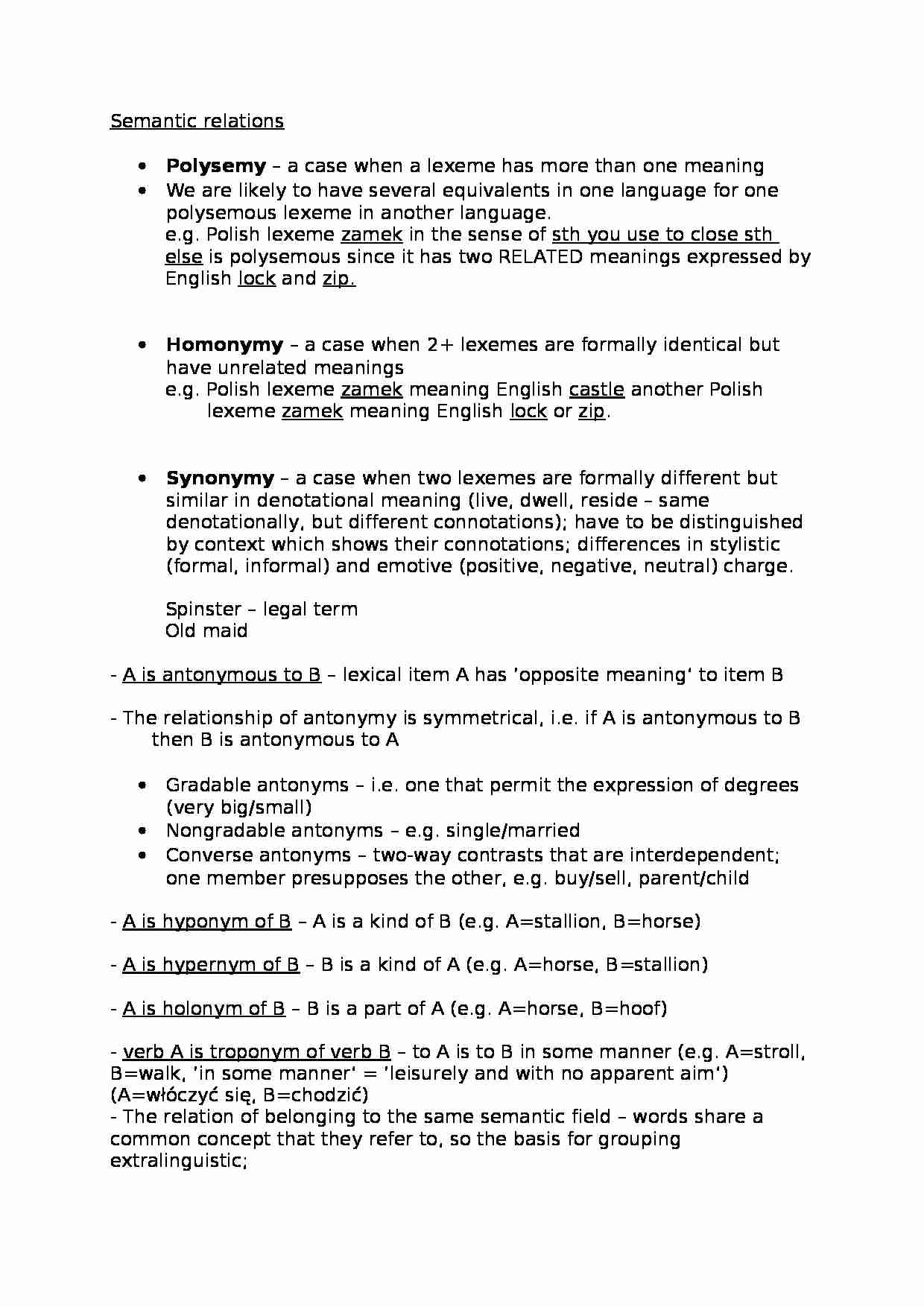To tylko jedna z 2 stron tej notatki. Zaloguj się aby zobaczyć ten dokument.
Zobacz
całą notatkę


Semantic relations
Polysemy - a case when a lexeme has more than one meaning
We are likely to have several equivalents in one language for one polysemous lexeme in another language.
e.g. Polish lexeme zamek in the sense of sth you use to close sth else is polysemous since it has two RELATED meanings expressed by English lock and zip.
Homonymy - a case when 2+ lexemes are formally identical but have unrelated meanings
e.g. Polish lexeme zamek meaning English castle another Polish lexeme zamek meaning English lock or zip.
Synonymy - a case when two lexemes are formally different but similar in denotational meaning (live, dwell, reside - same denotationally, but different connotations); have to be distinguished by context which shows their connotations; differences in stylistic (formal, informal) and emotive (positive, negative, neutral) charge.
Spinster - legal term
Old maid
- A is antonymous to B - lexical item A has `opposite meaning' to item B
- The relationship of antonymy is symmetrical, i.e. if A is antonymous to B then B is antonymous to A
Gradable antonyms - i.e. one that permit the expression of degrees (very big/small)
Nongradable antonyms - e.g. single/married
Converse antonyms - two-way contrasts that are interdependent; one member presupposes the other, e.g. buy/sell, parent/child
- A is hyponym of B - A is a kind of B (e.g. A=stallion, B=horse)
- A is hypernym of B - B is a kind of A (e.g. A=horse, B=stallion)
- A is holonym of B - B is a part of A (e.g. A=horse, B=hoof)
- verb A is troponym of verb B - to A is to B in some manner (e.g. A=stroll, B=walk, `in some manner' = `leisurely and with no apparent aim') (A=włóczyć się, B=chodzić)
- The relation of belonging to the same semantic field - words share a common concept that they refer to, so the basis for grouping extralinguistic;
e.g. colours, kinship terms, pleasant/unpleasant emotions, military ranks, educational terms, vehicles, sports, games.
... zobacz całą notatkę




Komentarze użytkowników (0)